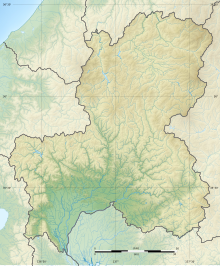
Back معركة سيكيغاهارا Arabic Batalla de Sekigahara AST Sekigahara döyüşü (1600) Azerbaijani سکیقاهارا دؤیوشو AZB Битка при Секигахара Bulgarian Batalla de Sekigahara Catalan Bitva u Sekigahary Czech Schlacht von Sekigahara German Batalo de Sekigahara Esperanto Batalla de Sekigahara Spanish
The Battle of Sekigahara (Shinjitai: 関ヶ原の戦い; Kyūjitai: 關ヶ原の戰い, Hepburn romanization: Sekigahara no Tatakai) was a historical battle in Japan which occured on October 21, 1600 (Keichō 5, 15th day of the 9th month) in what is now Gifu Prefecture, Japan, at the end of the Sengoku period.
This battle was fought by the forces of Tokugawa Ieyasu against a coalition of Ishida Mitsunari, several of which defected before or during the battle, leading to a Tokugawa victory. The Battle of Sekigahara was the largest battle of Japanese feudal history and is often regarded as the most important.
Mitsunari's defeat in the battle of Sekigahara is considered as the beginning of the Tokugawa shogunate establishment, which ruled Japan for another two and a half centuries until 1868.[6]
- ^ Cite error: The named reference
Naomasa; Watanabe Daimon4was invoked but never defined (see the help page). - ^ a b Davis 1999, p. 204.
- ^ a b Bryant 1995.
- ^ 『関原軍記大成』
- ^ 『関原合戦記』
- ^ "Battle of Sekigahara | Summary, Facts, & Outcome | Britannica". www.britannica.com. Retrieved 2022-06-22.
© MMXXIII Rich X Search. We shall prevail. All rights reserved. Rich X Search


